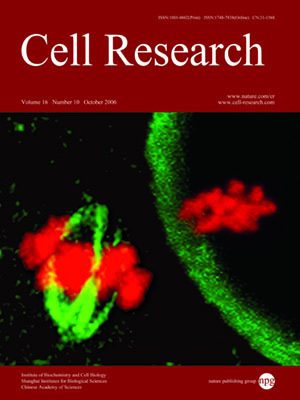Volume 16 Issue 10, October 2006: 841-850
ORIGINAL ARTICLES
Deficit of mitochondria-derived ATP during oxidative stress impairs mouse MII oocyte spindles
Xiao Zhang, Xue Qing Wu, Shuang Lu, Ying Lu Guo, Xu Ma
1Peking University First Hospital, Institute of Urology of Peking University, Beijing 100034, China; 2Reproductive and Genetic Center
of Peking University First Hospital, Beijing 100034, China;3Department of Obstetrics and Gynecology, Shanxi Medical University
Second Hospital, Taiyuan 030000, China; 4Reproductive and Genetic Center of National Research Institute for Family Planning,
Beijing 100038, China; 5Department of Genetics, Peking Union Medical College, Beijing 100038, China; 6WHO Collaborative Center
for Research in Human Reproduction, Beijing 100038, China
Correspondence: Xu Ma(genetic@263.net.cn)
Although the role of oxidative stress in maternal aging and infertility has been suggested, the underlying mechanisms
are not fully understood. The present study is designed to determine the relationship between mitochondrial function
and spindle stability in metaphase II (MII) oocytes under oxidative stress. MII mouse oocytes were treated with H
2O
2 in
the presence or absence of permeability transition pores (PTPs) blockers cyclosporin A (CsA). In addition, antioxidant
N-acetylcysteine (NAC), F
0/F
1 synthase inhibitor oligomycin A, the mitochondria uncoupler carbonyl cyanide 4-trifluoromethoxyphenylhydrazone
(FCCP) or thapsigargin plus 2.5 mM Ca
2+ (Th+2.5 mM Ca
2+) were used in mechanistic studies.
Morphologic analyses of oocyte spindles and chromosomes were performed and mitochondrial membrane potential
(ΔΨm), cytoplasmic free calcium concentration ([Ca
2+]
c) and cytoplasmic ATP content within oocytes were also assayed.
In a time- and H
2O
2 dose-dependent manner, disruption of meiotic spindles was found after oocytes were treated with
H
2O
2, which was prevented by pre-treatment with NAC. Administration of H
2O
2 led to a dissipation of ΔΨm, an increase
in [Ca
2+]
c and a decrease in cytoplasmic ATP levels. These detrimental responses of oocytes to H
2O
2 treatment could be
blocked by pre-incubation with CsA. Similar to H
2O
2, both oligomycin A and FCCP dissipated ΔΨm, decreased cytoplasmic
ATP contents and disassembled MII oocyte spindles, while high [Ca
2+]
c alone had no effects on spindle morphology.
In conclusion, the decrease in mitochondria-derived ATP during oxidative stress may cause a disassembly of mouse MII
oocyte spindles, presumably due to the opening of the mitochondrial PTPs.
Cell Research (2006) 16:841-850. doi:10.1038/sj.cr.7310095; published online 19 September 2006
FULL TEXT | PDF
Browse 2086


